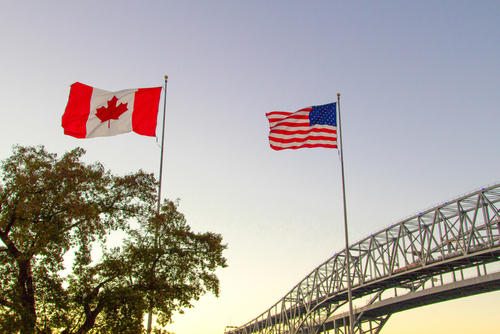
The Northern Border Coordination Act, authored by U.S. Sens. Gary Peters (D-MI) and Susan Collins (R-ME), advanced through the Senate this week, carrying with it the possible creation of a federal coordination center to be collocated along the border with Canada.
“The Northern Border Coordination Center will ensure that the Department of Homeland Security remains focused on the unique security needs of our nation’s Northern Border in addition to their other critical national security missions,” Peters, Chairman of the Homeland Security and Governmental Affairs Committee, said. “Along with the funding I secured to launch the center earlier this year, this legislation will further cement the center’s role in coordinating border security efforts, supporting personnel training and conducting testing for new border security technologies. Most importantly, the center builds on the vital role that Selfridge Air National Guard Base plays in protecting our nation and will help support the base’s success in the future.”
If approved by the House and President Joe Biden as well, the legislation would require the Department of Homeland Security to create the center at Selfridge Air National Guard Base in Michigan, alongside an existing U.S. Border Patrol sector headquarters, an Air and Marine Operations Branch, Coast Guard air station and others. It would then serve as a central location to coordinate implementation, evaluation and updates to the Northern Border Strategy or any successor strategies.
“The Northern Border Coordination Center established by this bipartisan bill will support border operations and enhance domain awareness with the shared goal of keeping Maine safe and secure,” Collins, Ranking Member of the Defense Appropriations Subcommittee, said. “This legislation is a valuable step forward in assessing and prioritizing the efforts on the ground at our Northern Border.”
Supposing it’s established, the new center would work to improve coordination between DHS and state, local and tribal governments, among others. It would also help train staff and test border security technology, and serve as a support hub for counter-unmanned aircraft systems along the northern border.




